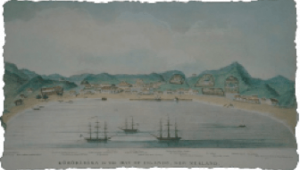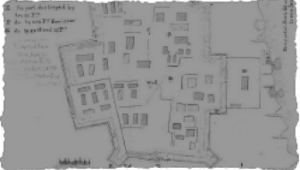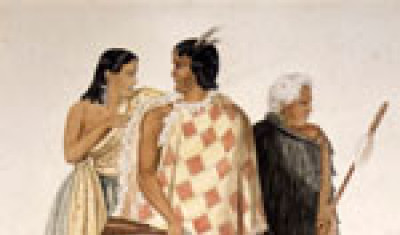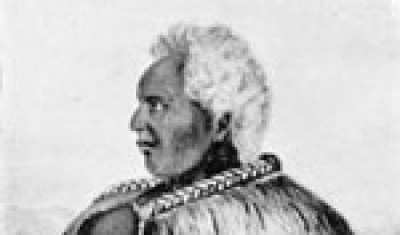
Te Tiriti
and The Treaty



The British Government’s policies to do with New Zealand changed in the late 1830s. The shift was necessitated by private interests in Britain and in France, who were planning to buy up Māori land and establish colonies of settlers. After intense debate, the Colonial Office decided that the New Zealand’s sovereign independence ought to be transferred to Britain. The aim was to do it peacefully by means of a treaty with the chiefs of New Zealand.
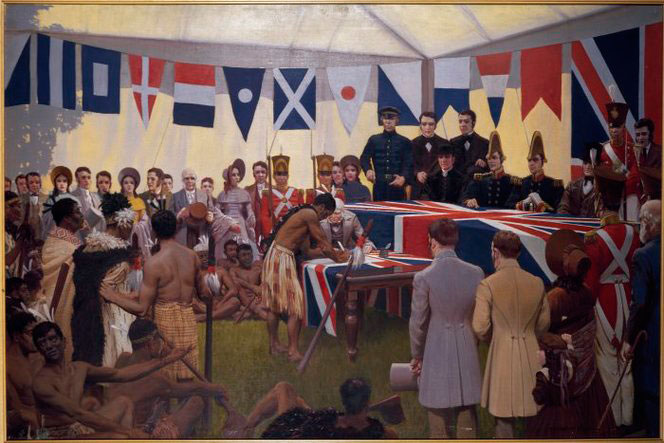
The signing of the Treaty of Waitangi (modern reconstruction). Tāmiti Wāka Nene is signing the document.
By M. King. From the Alexander Turnbull Library ref. G-821-2
Northern Māori was not averse to the idea of a treaty with Queen Victoria. They could see that the situation in Northland was deteriorating, with unruly pākehā visitors causing strife. The chiefs looked to the British authorities to bring the situation under control. Ngāpuhi already had a special relationship with the Crown, acknowledged in the 1835 Declaration of Independence. And Hongi Hika (a powerful Ngāpuhi chief) had actually travelled to London in 1820 and spoken directly with King George IV.
The English version of the Treaty of Waitangi was written by Lieutenant-Governor William Hobson and James Busby. In this version, the chiefs agreed to “cede to Her Majesty the Queen of England absolutely and without reservation all the rights and powers of Sovereignty”. Furthermore, the British would control all land sales. In return, the signatories were promised protection, and “all the rights and privileges of British subjects”. It was not a very good deal for Māori.
Most of the Māori signatories did not sign that document. They signed a different document – Te Tiriti O Waitangi – supposedly a translation of the English version into Māori. In this version, the chiefs ceded kāwanatanga to the British but retained te tino rangatiratanga (the unqualified exercise of their chieftainship). The Treaty was translated in haste by the missionary Henry Williams and his son. Some historians have suggested that the Williamses deliberately blurred and softened the meaning of the Māori version, to encourage the chiefs to sign.1
On 5 February 1840, Māori from all over the region gathered at Waitangi to meet with representatives of the British Crown. After an intense debate, which lasted well into the night, the Chiefs reached a consensus. The following day (the first Waitangi Day) more than 40 rangatira signed the document, and New Zealand became part of the British Empire. Hone Heke and Tāmati Wāka Nene, central characters in the war, which would erupt a few years later, both signed Te Tiriti that day. Te Ruki Kawiti was one of the few chiefs who did not sign. He argued strongly against Te Tiriti, although after further discussion with his people he agreed to sign a few months later. In the months that followed, Hobson and others toured the country gathering signatures as they went.
